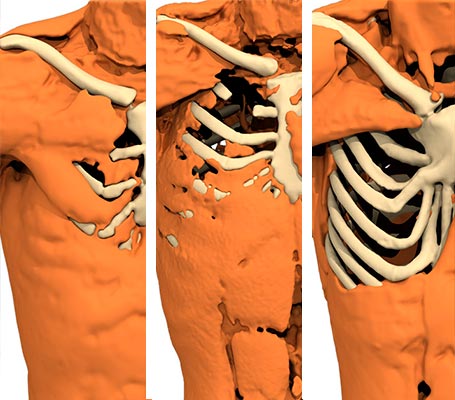Population, symptoms and causes
Most often, the Poland Syndrome’s malformation is limited to the pectoralis major muscle, but in some cases, it can be associated to other types of deformations. In 20% of cases, it is associated with atrophy of the hand and upper arm on the same side. The chest and ribcage may also present associated abnormality (atrophy, fibrosis, Pectus).
Poland Syndrome’s origin is poorly known. A hypothesis is that this syndrome is due to an abnormality of formation of the subclavicular artery at the embryonic stage, which would induce a partial development, or lack of development, of the pectoralis major muscle during pregnancy.
Classification of the different types of Poland Syndrome
Poland syndrome can be classified according to the degree of atrophy of the subcutaneous plan (fat, skin and mammary gland in the woman) and the deformity of the bone plane.
- Type 1 : The subcutaneous plan is correct (fat and skin thickness hide part of the ribs, in women the breast remains fully or partially developed).
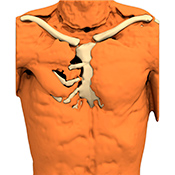
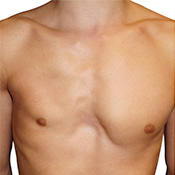

- Type 2 : The subcutaneous plane is more atrophic (ribs more visible, partial or total absence of breasts in women).
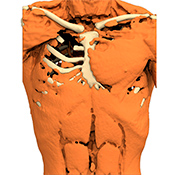
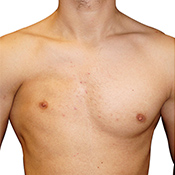

- Type 3 : Atrophy of the subcutaneous plane associated with deformity of the thoracic cage.
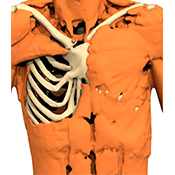
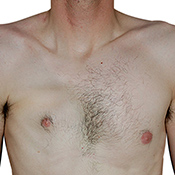
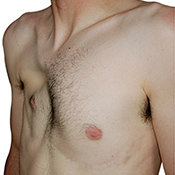
Functional Impact
Its functional impact is low, even in the case of atrophy of the hand, but the psychological impact, due to the aesthetic appearance, may be very damaging in terms of self-esteem and social relationships.

